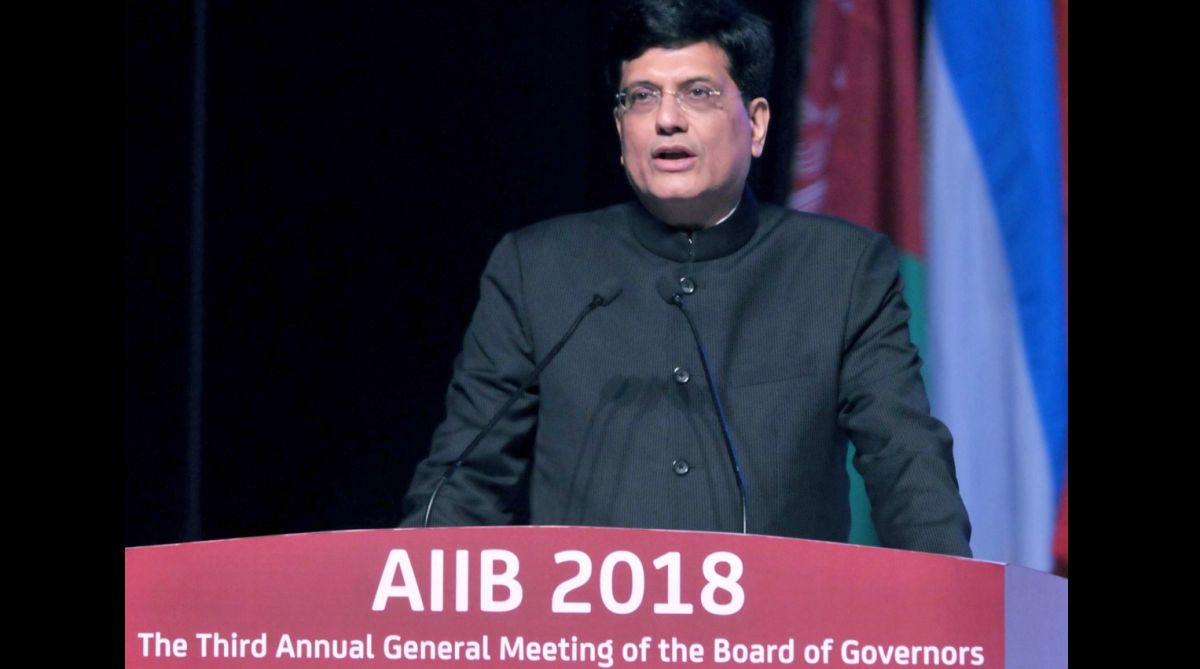Intel appoints Santhosh Viswanathan as India region head
Chip maker Intel on Friday said that it appointed Santhosh Viswanathan to head the India region business as its Managing Director (MD).
AIIB has an authorised capital base of US$100 billion earmarked “to improve economic and social development in Asia”

Union Finance and Corporate Affairs Minister Piyush Goyal addresses at 3rd Annual meeting of the Board of Governors of Asian Infrastructure Investment Bank (AIIB), in Mumbai on June 26, 2018. (Photo: IANS/PIB/File)
Just three years after its founding, the Asian Infrastructure Investment Bank (AIIB) – initially perceived as China’s World Bank – is well on its way to becoming a credible institution by taking forward its mandate of funding infrastructure projects in Asia.
The AIIB – founded to plug Asia’s monumental infrastructural deficit – is led by China and has 57 prospective founding members and 20 from outside the region, including France, Germany, Italy and the UK. The total membership stands at 84 as of end 2017.
AIIB has an authorised capital base of US$100 billion earmarked “to improve economic and social development in Asia by investing in high quality, financially viable and environmentally friendly infrastructure projects”. China is its single largest contributor and holds around 28 per cent voting share, giving it veto power over major decisions.
Advertisement
AIIB & India
India is AIIB’s second-largest shareholder and the biggest borrower. Projects worth US$4.4. billion have been financed to it in the past three years, Subhash Chandra Garg, India’s secretary at the Department of Economic Affairs, said in an official statement.
The statement came ahead of AIIB’s third annual meeting currently underway (June 25-26) in Mumbai, India’s financial capital, with innovation and collaboration as its theme.
AIIB is the first major multilateral development bank where principal contributors are the borrowing members themselves. While 75% of the capital is from Asia, several non-Asian regions like Europe, North America, some East African and Latin American countries have also joined the bank as members.
Borrowing from AIIB is preferred by a number of countries as it charges about one to 1.5 per cent interest with long term repayment including five-year grace period.
Indonesia has emerged as the second largest borrower with about US$ 600 million loans.
AIIB’s Balancing Act
On 24 June 2016, the AIIB board approved its first four loan projects totalling US$509 million – which more or less put to rest the speculations about the long-term aims and intentions of AIIB.
AIIB project was first announced in October 2013 simultaneously with Chinese President Xi Jinping’s overland Silk Road Economic Belt and Maritime Silk Road initiatives – the two pillars of China’s Belt and Road Initiative (BRI).
The initial scepticism was therefore that the AIIB was primarily a vehicle to fund BRI-related projects to promote connectivity in Asia as well as to further China’s strategic goals, several critics had pointed out then.
That India has become an important recipient of AIIB loans is noteworthy and indicates the degree of independence of the AIIB from the BRI.
India has reiterated its reservations about the China-Pakistan Economic Corridor (CPEC) time and again. It was the only country in the eight-nation Shanghai Cooperation Organisation meet held earlier this month which refused to endorse China’s ambitious Belt and Road initiative for which Beijing has signed pacts with nearly 80 countries and international organisations.
As a report in Australian Institute of International Affairs, a leading think tank, states, “…For critics focused on poverty reduction there is a slum upgrading project, and for markets, there are road and power projects. For regional supporters, there are two continental projects linking to China’s Silk Road plan but also a project in South Asia and one in Southeast Asia, projecting an expansive view of China’s support for the region.”
Advertisement